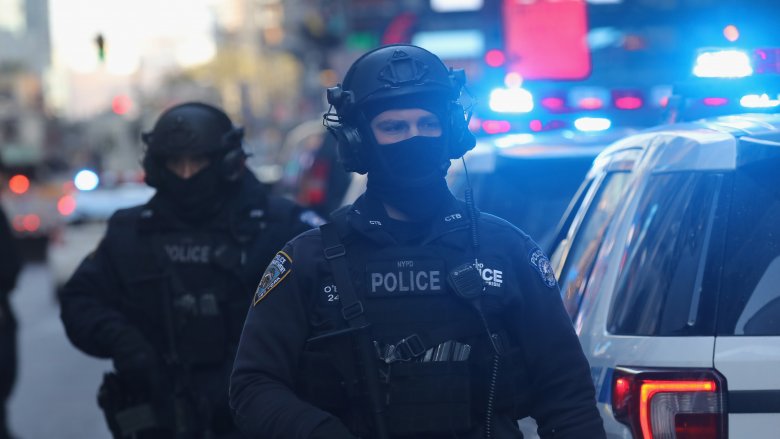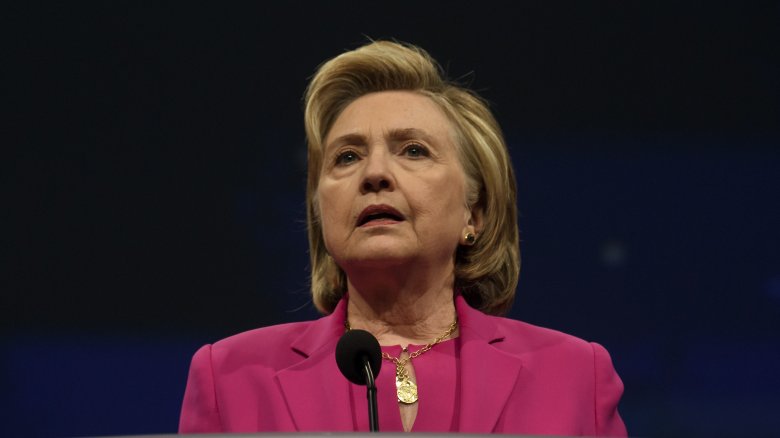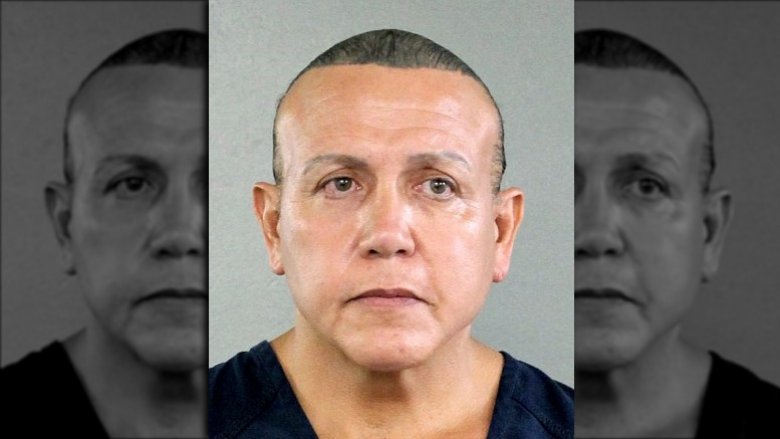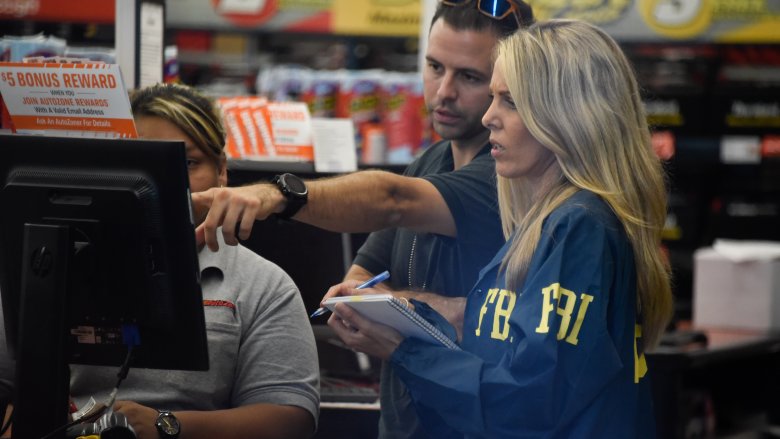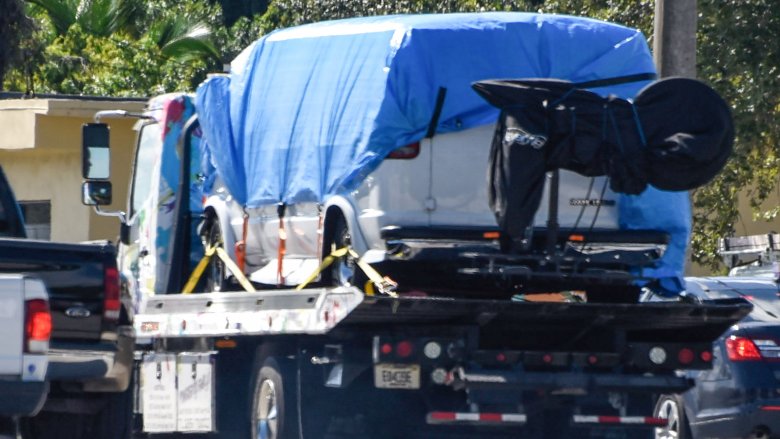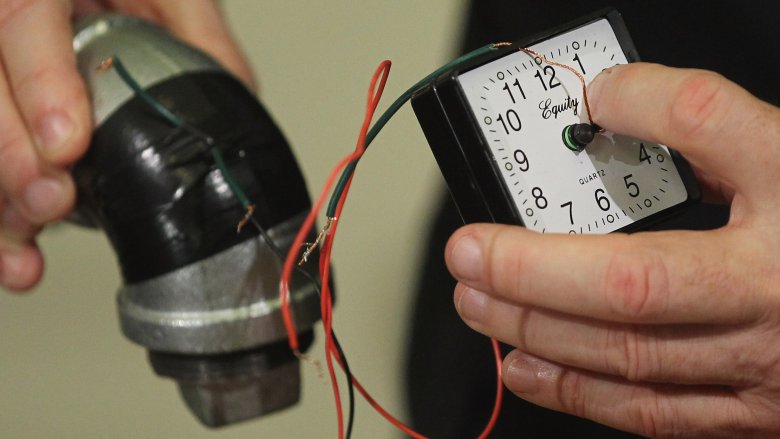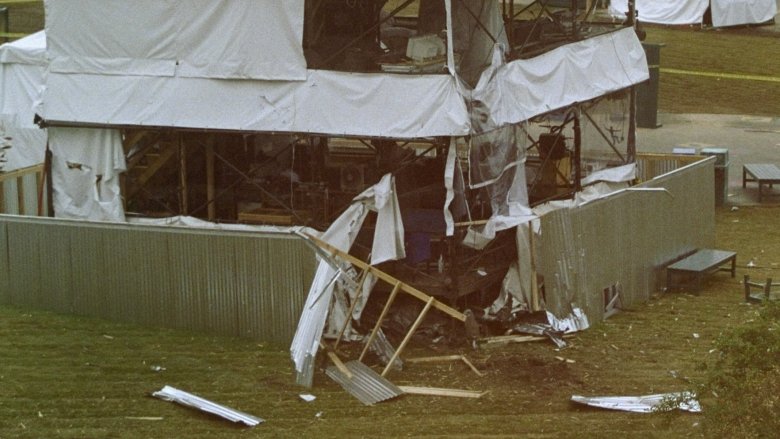Everything We Know About The Pipe Bomb Plot So Far
The political landscape in the U.S. is more divided than ever before. (Okay, maybe not more than during the Civil War, but there wasn't reliable polling back then.) We're judging people more by their political opinions than anything else about them. And even the president is attacking people and institutions he doesn't agree with in a way the country has never seen.
All of it makes for a pretty bleak and stressful time, especially leading up to the 2018 midterm elections. So perhaps it isn't surprising that this crucible spilled over into violence. We've already seen a woman, Heather Heyer, killed while protesting a Nazi rally in Charlottesville. Politicians and members of the administration are being hounded out of restaurants. People in MAGA hats have been attacked. And in October 2018, two weeks before the midterms, some (as yet unidentified) crazy person or persons decided to send a bunch of pipe bombs to Democrat politicians and a left-leaning media organization. Here's what we know about all the pipe bombs so far.
George Soros was the first target
On October 23, a security officer working at philanthropist George Soros' home in suburban New York found a suspicious package in the mailbox. While it probably didn't say "pipe bomb enclosed," it looked weird enough that the guard moved it far away into the woods and immediately called the FBI and the Bureau of Alcohol, Tobacco, Firearms and Explosives. According to Time, the agents realized this was no hoax and blew the package up.
ABC News says authorities aren't sure why the pipe bomb didn't detonate on its own. While the package was made to look like it came through the mail, it was actually hand-delivered, and they were checking surveillance footage for suspects.
Soros (pictured) is a target of a lot of hate from some on the right. He donates to liberal causes, and the lies spread about him are pretty sick. Most recently he has been accused of funding the caravan of migrants coming from Central America. The biggest false rumor about Soros is that he made his fortune by collaborating with the Nazis in World War II. (In reality, he had just turned 15 when the war ended.) The addresses of his homes are regularly posted online, usually with threats attached.
Because billionaires don't open their own mail, Soros himself was never in danger, and he wasn't even home. And while they started an official investigation, at the time the FBI said there was "no threat to public safety." But they didn't know what was coming.
The list of left-wing targets keeps growing
On October 24, all hell broke loose. Whoever sent the pipe bomb to Soros had a lot more targets in mind. Over the course of the day, it emerged that many of the county's most famous Democrats had also been sent pipe bombs, or at least "suspicious packages."
CNN, a media organization President Trump relishes calling "fake news," suddenly evacuated their New York headquarters in the middle of a broadcast after a pipe bomb addressed to a former CIA director was found there. Pipe bombs were also sent to one of Bill and Hillary Clintons' homes in New York and the Obamas' home in Washington D.C. CNN reported that another suspicious package was intercepted before it got to Rep. Maxine Waters and that authorities were looking for one addressed to Joe Biden that had been returned to sender.
With tensions high, some reports were incorrect. A strange package sent to New York governor Andrew Cuomo ended up being unrelated, and no dangerous device was sent to the White House, despite various reports. The San Diego Union-Tribune evacuated their own building after "suspicious looking packages" were found outside, but those also turned out to be nothing.
The one good thing is that whoever is building these bombs seems to have no idea what they're doing. The FBI described all the devices as "crude," none of them exploded on their own, and no one has been hurt as of this writing.
The alleged bomber was arrested
Over the next couple days, the bombs did not stop coming. Additional pipe bombs addressed to actor Robert De Niro and former Vice President Joe Biden were intercepted Thursday. According to the New York Times, another one was sent to Democrat Senator Cory Booker, a second via CNN to James Clapper, a former director of national intelligence, and a third may have been sent to Senator Kamala Harris, a California Democrat. All three packages were intercepted before they made it to their intended targets.
It became clear that the FBI was searching for someone in Florida, and on Friday they made an arrest. The suspect (pictured above, from a previous arrest) was identified as 56-year-old Cesar Sayoc Jr., who lived just outside Miami. A registered Republican, Sayoc has been in trouble before. Between 1991 and 2015 he was arrested numerous times for "felony theft, drug and fraud charges, as well as being arrested and accused of threatening to use a bomb." In 2012, he filed for bankruptcy and was noted as living with his mom and having no furniture. Authorities also hauled away a white van covered in pro-Trump stickers at the scene of the arrest. Attorney General Jeff Sessions said Friday that Sayoc will face federal charges related to the mail bombs. They could add up to 48 years in prison if he is convicted.
While Trump said after the arrest that "these terrorizing acts are despicable and have no place in our country," the night before (at 3 a.m.) he'd sent a tweet insulting CNN again. He also blamed "bomb stuff" for hurting the GOP's midterm momentum.
Update: On Wednesday, October 29, a third package addressed to CNN was discovered at a mail screening facility in Atlanta. It is reportedly "similar in appearance" to the other pipe bomb packages.
How the FBI caught their man
If you make a bunch of bombs that don't even explode, you're probably not a criminal mastermind. And as the Washington Post points out, it was less than 96 hours from the time the first package was found at George Soros' house to when the suspect, Sayoc, was apprehended in the parking lot of a Florida AutoZone.
Sayoc had been arrested many times, so he was in the system. All that was needed was for the bomber to screw up so authorities could find match DNA or fingerprints. And authorities say he did screw up. Sayoc allegedly left a fingerprint on an envelope that held the pipe bomb sent to Rep. Maxine Waters. The FBI also found DNA on two of the bombs, but they weren't able to match it to Sayoc right away. He also allegedly left a calling card of sorts, misspelling the last name of Rep. Debbie Wasserman Schultz as the return address on every bomb. Since he'd spelled it the same incorrect way on his Twitter, it was just one more sign the feds say pointed to Sayoc as the culprit.
By Thursday, October 25, the feds were zeroing in. They got Sayoc's cell phone records and figured out where he'd been the past few days. They also started "real-time surveillance." On Friday morning they arrested him at an AutoZone, probably the last place anyone wants to be arrested.
The FBI tried to question Sayoc right then and there before reading him his rights. This is allowed through a legal loophole called a "public safety exemption," and it basically meant they wanted to make sure no one else out there was in danger of blowing up. But Sayoc must not be a complete idiot, because he refused to talk and immediately asked for a lawyer. And he is, of course, innocent until proven guilty.
What we know about Sayoc's past
When someone becomes infamous, everyone who ever spoke to them comes out of the woodwork to say how totally crazy they were. But there is plenty we know for sure about Sayoc, and it doesn't paint a great picture.
Sayoc had a hard time keeping jobs or apartments, according to the New York Times. While he (actually) lost his house to foreclosure in 2009 and filed for bankruptcy in 2012, during a lawsuit in 2014 he claimed he'd played soccer for A.C. Milan in Italy and arena football in Arizona. He also said he owned a dry-cleaning business and was at school learning to be a vet.
According to a lawyer who had represented Sayoc in a 2002 criminal case, he was obsessed with the idea he belonged to the Seminole tribe, but his family was actually Italian and Filipino. The lawyer also said Sayoc showed him a scrapbook filled with images of wrestlers and bodybuilders he idolized. He said Sayoc exhibited "a total lack of maturity" and "lacked an identity." But it seems that something about Trump spoke to him.
During the 2016 campaign, Sayoc registered as a Republican and proudly wore a MAGA hat to a Trump rally. The van hauled away by the FBI was covered in political stickers and even served as his house from time to time. People had been taking pictures of it for years, weirded out by all the pro-Trump and conspiracy stickers, along with ones saying "CNN sucks" and images of Hillary Clinton in crosshairs.
What is a pipe bomb and why are they so popular?
Pipe bombs are extremely popular with terrorists. According to a 2003 report by the Royal Army Medical Corps, their use skyrocketed because they're "simple and easy to make and details of bomb construction are freely available from the Internet." Since you can buy all the stuff needed at hardware stores, the bombs usually don't have much that can be traced back to the maker.
At their most basic, pipe bombs are just 6 inches of lead or PVC piping filled mostly with gunpowder. Unlike other explosive devices, they don't need shrapnel, since they become their own shrapnel when they blow up, although some criminals add nails or glass to make them even more deadly. While they can be set off using a fuse, most bomb makers want to be far away when they go off, so they use a booby trap or remote detonator. The bombs will vary depending on who is making them, so they can be unbelievably deadly or complete duds.
Since the variations are "enormous," it's important that pipe bombs are studied in controlled environments so law enforcement knows what to do when faced with one. One group of researchers got to make and blow up 94 pipe bombs all in the name of public safety. They report that pipe bombs are "the most common and pervasive" explosive devices cops have to deal with. Between 1993 and 1997, 34 percent of 10,000 bombings and attempted bombings used simple homemade pipe bombs.
Pipe bombs are a historical favorite of criminals in the U.S.
Terrorists have a long history of using pipe bombs in the U.S. The "Mad Bomber" used them to terrorize New York City in the 1940s and 50s. The New York Times says he planted 33 pipe bombs and 22 of them exploded, injuring 15 people.
AFP reported in April 2018 that an 83-year-old man became the oldest person executed in the U.S.; he had used pipe bombs to kill a judge and a lawyer in the 1980s. When the Unabomber was arrested in 1995, police found a partially completed pipe bomb in his house. 2002 saw Lucas Helder plant 18 pipe bombs across five states in one weekend, injuring six people. In 2017 a would-be suicide attacker strapped a pipe bomb to his chest and went to New York's busiest subway stop during morning rush hour. Fortunately, the bomb didn't fully detonate, and he ended up being the only one who got hurt.
Possibly the most famous pipe bomb attack in U.S. history was at the Centennial Olympic Park during the Summer Games in Atlanta in 1996. According to CNN's timeline, a caller told 911 there would be an explosion in half an hour. 22 minutes later a 40-pound pipe bomb went off, resulting in two deaths and injuring more than 100 people.
It's just luck that more of these attacks don't happen — cops find criminals with pipe bombs all the freaking time. In August 2018, cops in Arizona arrested a guy whose house was filled with 42 of the things.
So why is this craziness happening now?
Intended target George Soros released a statement saying he "deplores violence of any kind and urges politicians across the political spectrum to tone down their rhetoric." Rep. Maxine Waters, who was sent two packages with pipe bombs in them, said she "unequivocally condemn[s] any and all acts of violence and terror." The head of CNN lashed out at Trump and press secretary Sarah Huckabee Sanders for not taking seriously the fact the bomb sent to the company was probably because of their continued attacks on the media.
The Guardian points out Trump's campaign even sent out an email criticizing CNN hours after the explosive was found in their building, but they later apologized for the message. While not mentioning that he attacks the media and his opponents all the time, the president called the attempted bombings "egregious," "despicable," and "abhorrent" while promising to launch a full investigation. He later blamed the media in a tweet.
It's too early to guess at the motivation of the unknown bomber, but people have tried anyway. So far only Democrats and a liberal media company received bombs. Some liberals think they're the targets, while the Daily Beast reported that several prominent right-wingers have called this a "false flag" set up by the left. New York Mayor Bill de Blasio, on the other hand, thinks it was an attempt to "undermine our free press." Former FBI assistant director Tom Fuentes suggested the terrorist was hoping to affect the outcome of the midterm elections, saying it was "someone trying to cause chaos in our process."
